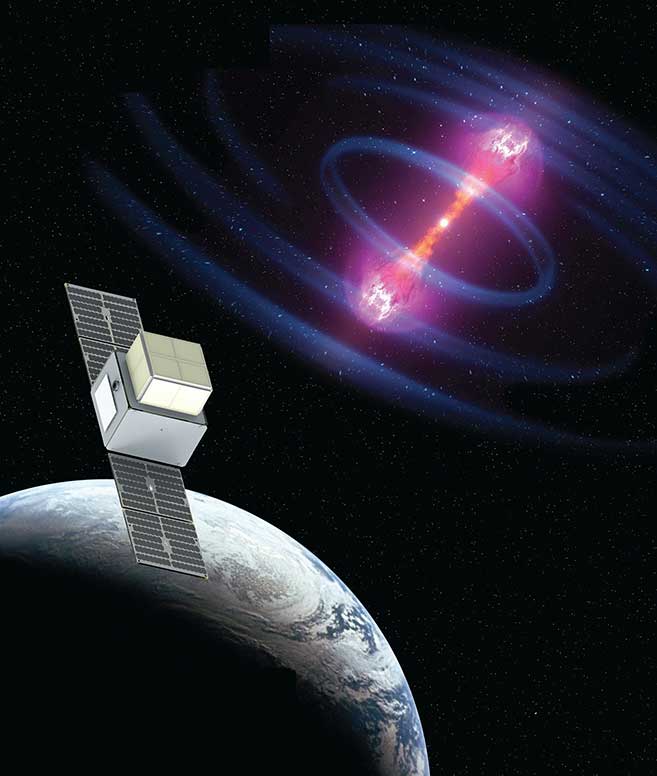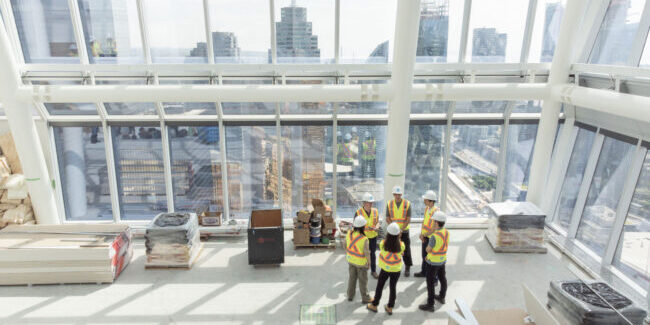For Alexandre Florio (UTIAS MASc candidate), one of the most thrilling aspects of spacecraft design is that the team only has one chance to get the mission right.
“If your car breaks down on a road, you can go to an auto repair shop,” he says. “But if your satellite breaks down in space, you don’t have that option.”
Florio is part of the Space Flight Laboratory (SFL), a team of graduate researchers and full-time engineers — led by Professor Robert Zee at the University of Toronto Institute for Aerospace Studies (UTIAS). The lab develops innovative, cost-effective small satellites for new and emerging applications worldwide.
Since its inception in 1998, the team has launched 70 distinct micro- and nano-class satellites, with 26 additional projects currently under development or awaiting launch.
The laboratory follows a ‘teaching-hospital’ model, where students not only learn through coursework and research, but also by engaging in demanding, real-world missions with critical applications for governments, companies and research institutions.
“Students at SFL get to work in a tight-knit community with talented engineering professionals who are always supportive, sharing knowledge and providing feedback,” says Florio.
“We are taught the fundamentals of spacecraft design and requirement definition. By having a great understanding of our spacecraft and the environment it’s going to be in, we can determine the necessary analyses and tests that must be performed to ensure mission success.”
“The lab offers a perfect balance between fostering practical and research skills,” adds Alex Kiar (UTIAS MASc 2T1), a former student in the SFL, who now works as a spacecraft systems engineer in the lab’s Spacecraft Mechanical Systems unit.
“I got to learn from and work alongside space systems engineers with a wealth of knowledge and experience working on decades of space missions, while also getting to investigate new space technologies.”
As part of its graduate studies program, UTIAS offers two microsatellite design courses where students have an active role in the concept and design of a spacecraft.
Students gain a deep background in systems engineering, and through their thesis, work on real missions that involve all aspects of design, prototyping, assembly, integration and testing.
“It was a great experience for me because I was assigned control, computing and navigation tasks that were way outside my comfort zone. I was immediately immersed in all aspects of our research in spacecraft design,” says Kiar.
Kiar and Florio are both part of a small team working on StarBurst, a mission funded by NASA’s Astrophysics Pioneers Program that was initiated in 2020 to perform valuable science research at lower costs. Dr. Daniel Kocevski at NASA’s Marshall Space Flight Centre is the principal investigator for the mission.

The 300-kg small satellite — the largest satellite to be built by SFL to date — will detect high-energy gamma ray emissions from the merger of neutron stars, using a payload developed by the U.S. Naval Research Laboratory.
Neutron stars are among the densest celestial objects in the universe, with a mass that is about 1.4 times greater than the sun. In a neutron star, all that mass is condensed into a sphere that is typically 20 kilometres in diameter — by comparison, the sun itself is more than 72,000 times larger.
When two neutron stars orbit each other, they will slowly attract one another until they eventually collide. This produces gravitational waves and gamma ray bursts, which are flashes of high-energy radiation that researchers now understand to be a source for the creation of heavy elements, such as gold and platinum.
“While we can detect gravitational waves on Earth using very large observation facilities, it is considerably harder to detect gamma rays as our atmosphere absorbs them before they reach the ground,” says Florio. “This is why it is preferable to detect them from space.”
StarBurst is set to launch between 2025 and 2026. Once it is orbiting the Earth, it could observe up to 10 neutron star mergers each year it is in operation.
All space missions at SFL are divided into different subsystems, and Florio’s work is focused on the design, analysis and testing of the spacecraft’s deployable solar wings. His efforts go into ensuring that these wings can survive the environment they will see throughout their lifetime, such as ground tests, rocket launch and the space environment.
He is also handling how the wings will be stowed when inside the rocket and deployed once in orbit.
“While there has been some research on the design of smaller deployable solar wings, the literature on wings the size of those on StarBurst is limited,” says Florio. “My research objective is to fill some of that void and provide a roadmap for the development of such deployable structures.”
Kiar, who began his MASc in 2019 during the early stages of the StarBurst mission, was assigned to the thermal subsystem. His responsibilities included looking at how the satellite was planned to be operated, and determining how the thermal control of the gamma-ray detection instrument on board the spacecraft would be implemented.
“Due to the nature of the instrument, the temperature requirements were quite strict — requirements were placed on the temperature range the detector could experience in space, as well as the temperature stability of the detector over time,” he says.
“This led to a series of design trade studies on how best to manage the detector temperature, which formed the focus of my research within the StarBurst mission.”
Kiar has worked on four missions since joining SFL. As a staff member and mentor to students, his responsibilities include the assembly, integration and testing of spacecraft.
“We have four new students starting in September who will be joining the StarBurst mission,” says Kiar.
“Every time new students come in, they’re eager to investigate different areas of spacecraft design. It’s really rewarding to get to be actively engaged in their learning journey and support them through their thesis work.
“Professor Zee really encourages everyone at SFL to become great systems engineers, which means understanding all the different aspects of the mission you are assigned to. This emphasis not only makes us better researchers but also better engineers.”




